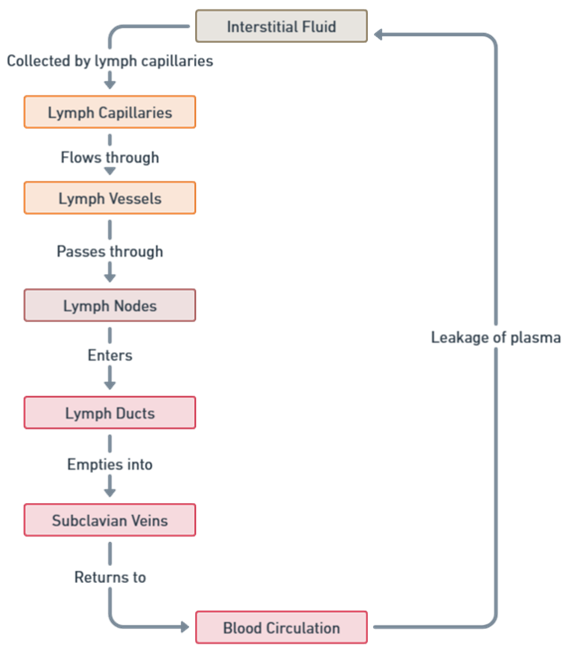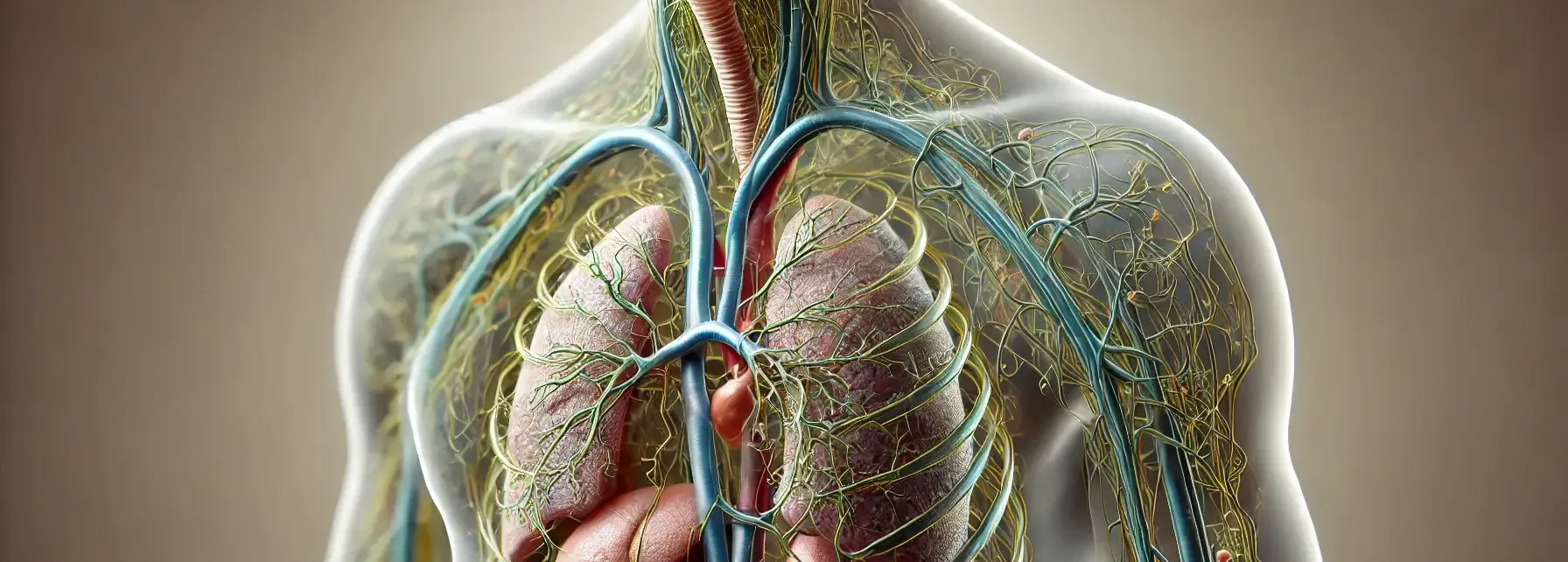- Lymph circulation is the process by which lymph, a clear fluid containing excess interstitial fluid, waste products, and immune cells, is transported through the lymphatic system and returned to the bloodstream.
- The circulation of lymph is essential for maintaining fluid balance, immune function, and the removal of waste products from tissues.
 Here is a flowchart depicting Lymph Circulation
Here is a flowchart depicting Lymph Circulation
Lymph circulation follows these general steps
Lymph circulation follows these steps:
Formation of Lymph
- Lymph forms when excess interstitial fluid, proteins, and waste products are absorbed by lymphatic capillaries, which have a structure that allows uptake of fluid and large molecules from surrounding tissues.
Advertisements
Transport through Collecting Vessels
- Lymph moves from lymphatic capillaries into larger collecting lymphatic vessels, which contain smooth muscle and valves to ensure unidirectional flow.
- The smooth muscle contracts rhythmically to propel the lymph.
Filtration in Lymph Nodes
- Collecting vessels pass through lymph nodes, where lymph is filtered, and immune cells like macrophages, B cells, and T cells detect and eliminate pathogens, abnormal cells, and foreign particles.
Convergence into Trunks and Ducts
- After filtration, lymphatic vessels merge to form larger trunks, which then converge into the right lymphatic duct and thoracic duct.
- These ducts drain lymph from different body regions.
Return to the Bloodstream
- Lymphatic ducts empty lymph back into the bloodstream at the junction of the internal jugular and subclavian veins, where its components are redistributed throughout the body.
Click Here to Watch the Best Pharma Videos
Advertisements

